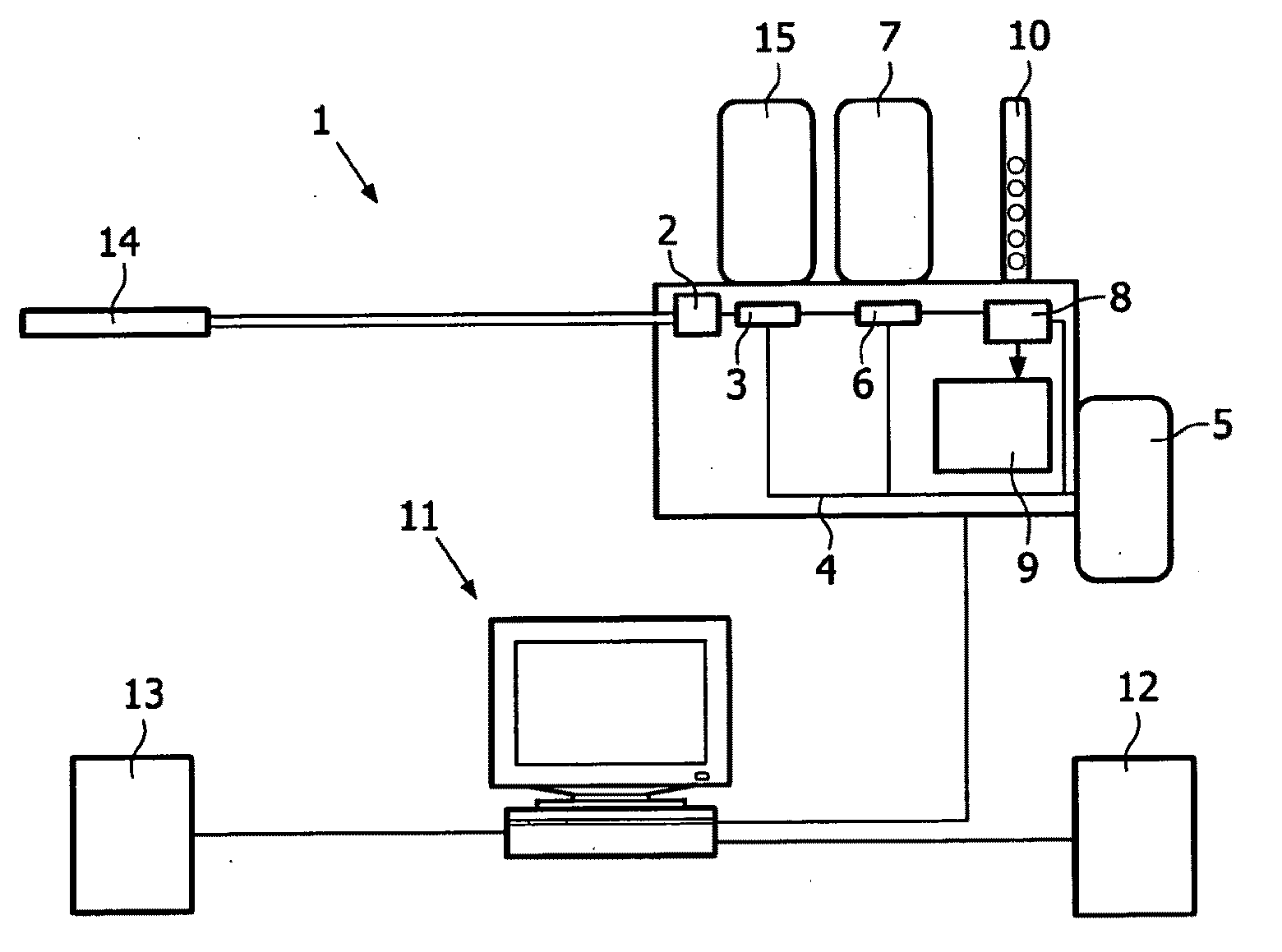Automatic detection of infectious diseases
- Summary
- Abstract
- Description
- Claims
- Application Information
AI Technical Summary
Benefits of technology
Problems solved by technology
Method used
Image
Examples
Embodiment Construction
[0035]FIG. 1 schematically illustrates an exemplary embodiment of a system 1 for automatic detection of infectious diseases. The detection is done by real time detection of pathogen DNA of bacteria, vira, funghi or other organisms involved in the development of sepsis of a patient.
[0036]In the system, a blood sample is provided at an input unit 2. The blood sample may be provided from a catheter 14. In an exemplary embodiment the catheter is placed in a patient under investigation. However, it is to be understood that the operation of the system is not conditioned upon the placement of the catheter in a patient. The blood sample may be provided to the system in any way, including but not limited to, the provision of post-drawn blood samples.
[0037]In an exemplary embodiment, around 250 μL (microliters) of blood pr. hour is inputted into the system for analysis. The blood may be provided in a continuous flow, possible in connection with volume units provided at predetermined time inte...
PUM
| Property | Measurement | Unit |
|---|---|---|
| Volume | aaaaa | aaaaa |
| Luminescence | aaaaa | aaaaa |
Abstract
Description
Claims
Application Information
 Login to View More
Login to View More - R&D
- Intellectual Property
- Life Sciences
- Materials
- Tech Scout
- Unparalleled Data Quality
- Higher Quality Content
- 60% Fewer Hallucinations
Browse by: Latest US Patents, China's latest patents, Technical Efficacy Thesaurus, Application Domain, Technology Topic, Popular Technical Reports.
© 2025 PatSnap. All rights reserved.Legal|Privacy policy|Modern Slavery Act Transparency Statement|Sitemap|About US| Contact US: help@patsnap.com



